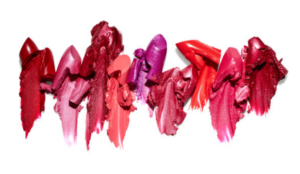A Closer Look at Bug-Based Lip Colors

In the world of beauty, we often hear about groundbreaking innovations, trendy colors, and exciting formulations. But what about the not-so-glamorous side of cosmetics? Have you ever wondered about the ingredients lurking in your lipstick or lip gloss? Well, prepare to be surprised! One ingredient that has raised eyebrows in the beauty industry is carmine, a natural red pigment derived from crushed insects. In this blog post, we’ll take a closer look at carmine-based lip colors, explore their origin, benefits, controversies, and alternatives, and help you make informed choices when it comes to the beauty products you use.
Cochineal insects, scientifically known as Dactylopius coccus, are tiny scale insects native to South America, particularly regions such as Peru, Chile, and the Canary Islands. These insects have played a remarkable role in history, dating back to ancient times when indigenous peoples discovered their use as a source of natural red dye.
Historical Significance:
- Ancient Civilizations: Cochineal insects were first utilized by the indigenous peoples of Central and South America, including the Aztecs and the Incas, who valued their vibrant red pigment. They would harvest these insects from the prickly pear cacti on which they fed.
- European Discovery: Cochineal insects remained a well-guarded secret of the indigenous cultures until Spanish conquistadors, led by Hernán Cortés, arrived in the Americas. Upon discovering the vivid red dye produced from the crushed insects, they recognized its potential value and brought it back to Europe in the 16th century.
Cochineal insects are particularly known for the intense and stable red dye they produce, known as carmine or cochineal extract. To extract this pigment, the insects are carefully harvested, dried, and then crushed to release the deep crimson hue found within their bodies.
The Art of Harvesting:
- Feeding on Prickly Pear Cacti: Cochineal insects feed exclusively on the sap of prickly pear cacti, which provides them with the nutrients needed to produce the red pigment.
- Hand Harvesting: Harvesting cochineal insects is a labor-intensive process. Skilled workers pick the insects by hand from the cacti.
- Sun Drying: After being harvested, the insects are spread out to dry in the sun. This process further intensifies the red color of the pigment.
The Benefits of Carmine in Lip Colors
Despite the controversies surrounding its use, carmine offers several benefits that have made it a valuable ingredient in lip colors and various cosmetics.
1. Vibrant and Striking Color:
Carmine is celebrated for its unmatched ability to provide a vivid and intense red hue. The color produced by carmine is exceptional in its depth and brilliance, making it a top choice for creating bold and captivating lip shades. Whether you’re looking for a classic red or a striking crimson, carmine delivers a color that’s hard to replicate with synthetic pigments.
2. Long-Lasting Wear:
One of the significant advantages of carmine in lip colors is its remarkable longevity. The pigment is highly stable and does not easily fade or lose its vibrancy throughout the day. This means that lip colors containing carmine can stay bold and eye-catching for extended periods, reducing the need for frequent touch-ups.
3. Natural Origin:
Carmine is sourced from a natural and renewable origin—the cochineal insect. For individuals who prioritize natural and sustainable ingredients in their beauty products, carmine can be an attractive choice. It’s biodegradable and does not contribute to the environmental concerns associated with some synthetic pigments.
4. Well-Tolerated by Sensitive Skin:
Carmine is generally well-tolerated by individuals with sensitive skin or allergies. Unlike some synthetic dyes, which may cause skin irritations or allergic reactions, carmine is less likely to trigger adverse skin responses. This makes it a suitable option for those with skin sensitivities who want to enjoy red lip colors without concerns about irritation.
5. Broad Range of Shades:
While carmine is renowned for its brilliant red color, it can also be blended with other pigments to create a wide range of shades. By adjusting the concentration of carmine and combining it with different hues, makeup manufacturers can produce an array of red, pink, and purple lip colors, catering to diverse consumer preferences.
6. Historical Significance:
Carmine has a rich historical legacy as a prized pigment used by ancient civilizations for textiles, art, and cosmetics. Its enduring popularity in cosmetics pays homage to its historical significance as a symbol of beauty and luxury.

Controversies Surrounding Carmine
While carmine has been prized for its vibrant red hue and natural origin, it has also stirred up significant controversies within the beauty industry and among consumers. Here are some of the key concerns:
1. Not Vegan-Friendly:
Carmine is derived from crushed cochineal insects, making it incompatible with vegan beauty products. For individuals who adhere to a vegan lifestyle, using carmine-based lip colors is not an option due to its animal origin.
2. Not Cruelty-Free:
The production of carmine involves the harvesting and crushing of cochineal insects, which raises ethical concerns regarding animal cruelty. The process may be perceived as harmful to the insects, as it ultimately results in their demise. This contradicts the principles of cruelty-free beauty, which advocate for the well-being of animals and the avoidance of harm.
3. Potential Allergic Reactions:
Like many natural and organic ingredients, carmine can trigger allergic reactions in some individuals. Skin irritation, itching, redness, and swelling are possible side effects for those who are sensitive or allergic to this ingredient. Such reactions can be uncomfortable and may deter individuals from using carmine-based lip colors.
4. Transparency Issues:
In the past, some beauty brands have faced criticism for not being transparent about their use of carmine in their products. This lack of transparency can lead to consumer confusion and frustration, especially for those who are unaware of the insect-derived nature of carmine.
5. Limited Appeal to Vegan and Ethical Consumers:
As consumer awareness regarding animal cruelty and veganism grows, carmine-based lip colors have limited appeal to those who prioritize ethical and sustainable beauty choices. This has led to a demand for alternatives that align with these values.
6. Shifting Industry Standards:
In response to the controversies surrounding carmine, the beauty industry is evolving. Brands are increasingly striving to meet the demands of consumers seeking cruelty-free and vegan beauty products. This has resulted in the development of alternatives to carmine that can provide similar shades without the use of insects.

Alternatives to Carmine-Based Lip Colors
To address the concerns raised by consumers and to cater to a more diverse range of preferences, the beauty industry is offering alternatives to carmine-based lip colors:
1. Synthetic Pigments:
Many beauty brands now use synthetic pigments to replicate the vibrant shades of carmine. These synthetic alternatives offer cruelty-free and vegan options that can mimic the color intensity of carmine without relying on insects.
2. Plant-Based Dyes:
Natural dyes derived from plants, such as beetroot, alkanet root, and hibiscus, are used to create red and pink shades in lip colors. These plant-based options provide a natural and cruelty-free alternative to carmine.
3. Mineral-Based Pigments:
Mineral pigments, including iron oxides and mica, can produce a variety of colors, including reds, without the need for carmine. These mineral-based pigments are often well-tolerated by sensitive skin and can offer vibrant, long-lasting hues.
4. Certifications:
Consumers seeking cruelty-free, vegan, or natural lip colors can look for beauty brands that are certified as meeting these standards. Certifications such as “vegan” and “cruelty-free” indicate that the brand does not use animal-derived ingredients like carmine.

Reading Labels and Making Informed Choices
To ensure you’re making informed choices when it comes to lip colors and cosmetics, it’s crucial to learn how to read labels, decipher ingredient lists, and be aware of certifications and claims made by beauty brands. Here are some tips to help you make informed decisions:
1. Check the Ingredient List:
- Carmine and Its Variants: When examining the ingredient list of lip colors and cosmetics, look for carmine or its variants, such as “cochineal” or “CI 75470.” These indicate the use of insect-derived red pigment in the product.
- Synthetic Alternatives: If you prefer to avoid carmine, check if the product uses synthetic red pigments. These are often labeled with specific color codes (e.g., “CI 15850” for synthetic red).
- Plant-Based Ingredients: Some products use plant-based dyes like “beetroot extract” or “hibiscus powder” to achieve red or pink shades. These natural alternatives offer a cruelty-free and vegan option.
- Mineral Pigments: Lip colors that use mineral pigments like “iron oxides” or “mica” are typically free from carmine and offer a variety of colors, including reds.
2. Research Brands:
- Vegan and Cruelty-Free Brands: Investigate beauty brands that align with your values. Brands that are certified as “vegan” and “cruelty-free” do not use animal-derived ingredients and do not test on animals.
- Transparency and Ethical Practices: Look for brands that are transparent about their ingredient sourcing and ethical practices. Brands committed to sustainability and ethical production often provide detailed information on their websites.
3. Patch Test:
- Skin Sensitivity: If you have sensitive skin or have experienced allergies to cosmetics in the past, consider performing a patch test before applying a new lip color to your lips. Apply a small amount of the product to a discreet area of skin, like your inner wrist, and monitor for any adverse reactions for at least 24 hours.
4. Certification Labels:
- Vegan and Cruelty-Free Certifications: Look for logos or labels on the product packaging that indicate vegan and cruelty-free certifications. These certifications provide assurance that the product meets specific ethical standards.
5. Consumer Reviews:
- Online Reviews: Before making a purchase, read online reviews from other consumers. Their experiences and feedback can provide valuable insights into a product’s performance, color payoff, and any potential issues.
6. Seek Clarity:
- Contact Brands: If you have questions or concerns about a product’s ingredients or ethical practices, don’t hesitate to reach out to the brand directly. Many brands are responsive to customer inquiries and can provide additional information.
7. Explore Your Options:
- Try Different Brands: Don’t hesitate to explore a variety of brands and products to find lip colors that align with your preferences and values. There are now numerous alternatives available that cater to a diverse range of beauty needs and ethical considerations.
The beauty industry is constantly evolving, and consumer demand for transparency, sustainability, and cruelty-free products is driving positive changes. While carmine-based lip colors may have their place, there are numerous alternatives available that can meet your beauty needs without relying on insects.
Ultimately, your beauty choices should align with your values and preferences. Whether you choose carmine-based lip colors or opt for vegan, cruelty-free alternatives, the most important thing is to feel confident and beautiful in your own skin. As consumers, our choices have the power to shape the beauty industry, so let’s make choices that reflect our beliefs and priorities, allowing us to wear our lip colors with pride and confidence.




